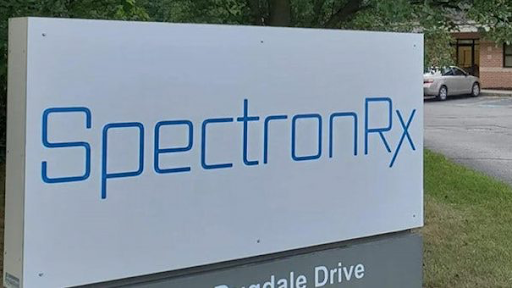We recently received word that SpectronRx, a leading radiopharmaceutical contract development and manufacturing organization (CDMO), has secured a U.S. Nuclear Regulatory Commission (NRC) Materials License for its new Indianapolis, IN headquarters. According to the report, the license expands SpectronRx’s roster of authorized nuclear pharmacists and authorized users. This is incredibly important, especially as SpectronRx continues to scale its early-stage development and commercialization services for pharmaceutical companies working to develop and deploy radiopharmaceutical compounds to treat and detect certain cancers and other diseases.
In the words of SpectronRx CEO John Zehner, “Securing Nuclear Regulatory Commission materials licensing for our new headquarters and additional staff is a significant milestone for the growth of SpectronRx. We now have the necessary approvals to scale our newly opened 60,000 square foot Indianapolis facility. This is great news for both patients and the State of Indiana alike, as it means a bigger pipeline for life-saving therapies and more jobs for medical professionals specializing in radiopharmaceuticals.”
But all this excitement had us wondering what radiopharmaceuticals are in the first place. So we went to work on some research and what we found is definitely worth your time. These are exciting times, especially if you happen to be a medical oncologist.
The SpectronRx news comes as the life sciences industry is in the midst of a nuclear explosion of sorts. Companies like Y-mAbs, Novartis, and others are banking on the promise that radiopharmaceuticals will be the standard of care for treating and detecting hard-to-treat diseases like medulloblastoma and metastatic castration-resistant prostate cancer. But what exactly are these radiopharmaceuticals?

Radiopharmaceuticals are a group of pharmaceutical drugs containing radioactive isotopes. They are being used primarily for the treatment and detection of certain types of cancers, but they are also being developed for cardiac disease. And what makes radiopharmaceuticals so unique is that they can be targeted to extremely precise areas in the human body. The design of these compounds is based on the physiological function of the target organ.
Also, because they can both treat and diagnose, many refer to these compounds as theranostic radiopharmaceuticals. Theranostic and radiopharmaceutical are often used interchangeably, but it’s all a subset of nuclear medicine.
“The radiopharmaceutical industry has been around for some time, but today it is at a tipping point,” says SpectonRx president Anwer Rizvi. “It is estimated that our industry will triple within the next few years. And with more radiopharmaceuticals making their way through the clinical pipeline, we are starting to see more data highlighting their effectiveness. And that’s why more life sciences organizations are committing real resources to radiopharmaceuticals.”
Companies like SpectronRx and Cardinal Health are recognized leaders in the space, and things are about to get much busier for them. Industry experts predict that 30% of nuclear medicine procedures in 2030 will be radiopharmaceutical therapies. As such, the industry is heating up significantly.
“In response to this increased demand, SpectronRx has experienced significant growth as an early-stage contract developer for global and domestic life sciences companies,” added Rizvi. “The scope of our new location and materials license gives us the ability to operate as a large-scale developer, manufacturer and nuclear pharmacy.”
The NRC materials license authorizes that SpectronRx can receive, acquire, possess and transfer byproduct, source, and special nuclear material in chemical and/or physical form. This includes any byproduct material with Atomic Numbers 1 through 83 with a half-life less than or equal to 120 days, with some exceptions. The license lists more than 25 different isotopes, ranging from Lutetium-177, Actinium-225, Iodine-131,and Iodine-123. Authorized uses include the preparation and distribution of radioactive drugs and radiochemicals for medical use to authorized recipients.
Late last year, Y-mAbs Therapeutics announced that the U.S. Food and Drug Administration cleared the Company’s Investigational New Drug (“IND”) application to treat medulloblastoma, which is the most common type of primary brain cancer in children. And more recently, Novartis’ compound for metastatic castration-resistant prostate cancer patients had its likelihood of approval because the targeted radioligand therapy met its coprimary endpoints.
As cancer treatment continues to make headlines, it’s essential to understand what developments like SpectronRx’s are all about. Whether you’re a patient, support person or healthcare professional, knowing about the latest advances in medicine might make a difference in someone’s life. And adding radiopharmaceuticals to your vocabulary is a great place to start.
Credit: Source link


Comments are closed.